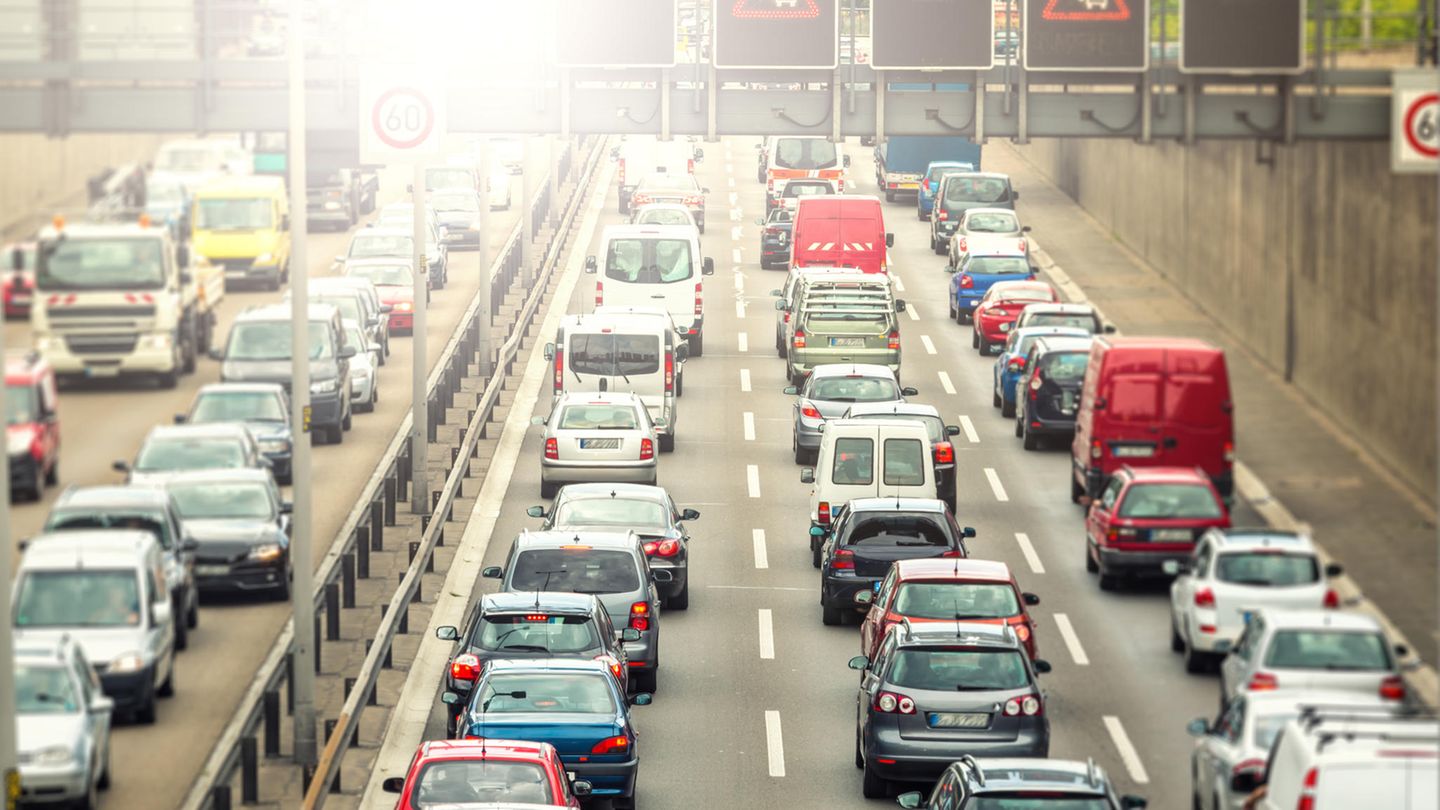Germany is to become climate neutral by 2045 – but how is that supposed to work? Experts have presented a list that the new federal government should work through in the first 100 days so that the goal can be achieved.
Who will rule after the federal election is still completely open. What is clear, however, is that the new government must not lose any time if it does not want to miss its own climate targets by crashing. Germany wants to be climate-neutral by 2045, greenhouse gas emissions have to be 65 percent lower by 2030 (compared to 1990), according to the tightened Climate Protection Act. That will not be easy.
Scientists from the think tanks Agora Energiewende, Agora Verkehrswende and the Climate Neutrality Foundation have now presented a plan with which this mammoth task can be mastered: one with 22 specific recommendations for action that should be implemented immediately after the election.
“In the first 100 days of the new government, Germany needs the largest climate protection program in the history of the Federal Republic,” said Patrick Graichen, Director of, at the presentation of the paper this week. The 100-day program contains “fast-acting, ambitious measures in all sectors,” added Rainer Baake from the Climate Neutrality Foundation. Without such an effort, the climate targets would be missed year after year, according to the authors, and climate neutrality by 2045 would be out of reach.
The proposed measures in detail:
General
1. Prepare climate budget and reform climate protection law: From 2022 there is to be a climate budget with 30 billion euros annually for investments and funding programs. On the other hand, environmentally harmful subsidies are to be phased out. In the case of investments by the public sector, a CO2 shadow price of 195 euros per ton should be offset in order to determine the profitability. If the sector targets for buildings and transport or the electricity sector are not met, the CO2 price should automatically rise.
2. Abolish the EEG surcharge, raise the CO2 price: The abolition of the green electricity surcharge lowers the electricity price and should give room for a higher CO2 price. This is expected to increase from currently 25 euros per ton to 60 euros in 2023 and to at least 80 euros in 2025. Currently, 55 euros are planned from 2025.
3. The subject sustainable finance and investments should become a focus of the federal government. All federal investment and funding programs are to be geared towards sustainability from 2022 onwards. Large companies and financial market players should indicate a CO2 shadow price of 195 euros per ton in their company reports.
Electricity sector
4. The Coal exit should be brought forward from 2038 to 2030 by law.
5. The expansion of Onshore wind energy is to be tripled – among other things by providing more space and by faster approval procedures.
6. Offshore wind energy in the North and Baltic Seas, expansion is also expected to take place more quickly
7. solar power should be tripled by 2030. Essential steps are a solar obligation for new buildings and roof renovations as well as more photovoltaic open space systems
8. Network expansion: Power lines planned for 2035 should be ready by 2030. Additional battery storage systems are intended to make the grid more intelligent.
Industry
9. About Climate protection agreements the establishment of low-carbon key technologies is to be guaranteed with industry. The idea: The state shares in the additional costs of investing in climate-friendly production facilities, for example in the steel and cement industries, from which everyone will benefit later.
10. The funding programs for the production of green hydrogen should be at least doubled and an infrastructure for supplying the industry built.
11. Climate protection and efficiency investments in the industry should be promoted by more favorable tax depreciation rules.
traffic
12. The amount of Road tax should be based on CO2 emissions for newly registered cars from 2023. In addition, company car taxation is to be ecologically reformed, plug-in hybrids are no longer to be subsidized with purchase premiums and the tax privilege for diesel is to be abolished.
13. Preparation of a master plan for the charging infrastructure in order to achieve the Electromobility move forward. In addition, a federal funding program is intended to accelerate the conversion of local public transport to electric vehicles.
14. Speed limit 130 on the highway. In urban areas, Tempo 30 should be the rule and Tempo 50 should only be allowed in exceptional cases.
15. The Federal Transport Infrastructure Plan is to be geared more towards climate protection. Means: More money for the railways, less for the roads.
16. Decarbonise freight transport by extending the truck toll to all roads and a higher CO2 surcharge. Also: infrastructure projects for overhead line trucks, battery trucks and fuel cell trucks as well as lower infrastructure fees for railway companies.
building
17. In order to achieve the goal of a climate-neutral building stock, this should Building Energy Act will be adjusted as early as the beginning of 2022 instead of 2023. From 2024 the installation of fossil heating systems will be banned, new buildings must have at least the “Efficiency House 40” level.
18. The Funding programs for energy-efficient new buildings, energetic renovation and climate-friendly heating replacement are to be expanded significantly with additional billions. Funding that does not contribute to the goal of climate neutrality should be terminated.
19. Social warming transition: Tenants should not be overwhelmed by rising costs. Therefore, the permissible modernization levy should be reduced to 1.5 percent (currently 8 percent), the additional costs due to the CO2 price should not be passed on to the tenants. The introduction of warm rents from 2025 is intended to give landlords incentives to renovate buildings.
20. By 2030, eight million households (plus 50 percent) are to be included green district or local heating are supplied. The prerequisites for this must now be created.
Agriculture
21. Reduce animal populations and balance nutrient balances: This is to be achieved, among other things, through a new nitrogen tax and the abolition of the VAT reduction for animal products
22. One Moor protection strategy is to track the rewetting of all agriculturally used peatlands by 2045, since drained peatlands emit a lot of greenhouse gas (around 40 percent of all agricultural emissions).
Agora Energiewende, Agora Verkehrswende and the Climate Neutrality Foundation are alliances of scientific experts who prepare analyzes and advise politicians. “We are aware that the implementation of our numerous proposals represents a huge challenge for politics and administration and will also demand a lot from society,” the authors write in their current paper.
The details of individual measures can and must of course be discussed. It is clear, however, that there can be no cherry-picking, but that all areas must make their contribution in order to achieve the climate goals: “In view of the historical, global task of mankind, to combat climate change and to leave a planet worth living in for future generations, however, there is no sensible alternative to this path. “
Jane Stock is a technology author, who has written for 24 Hours World. She writes about the latest in technology news and trends, and is always on the lookout for new and innovative ways to improve his audience’s experience.




